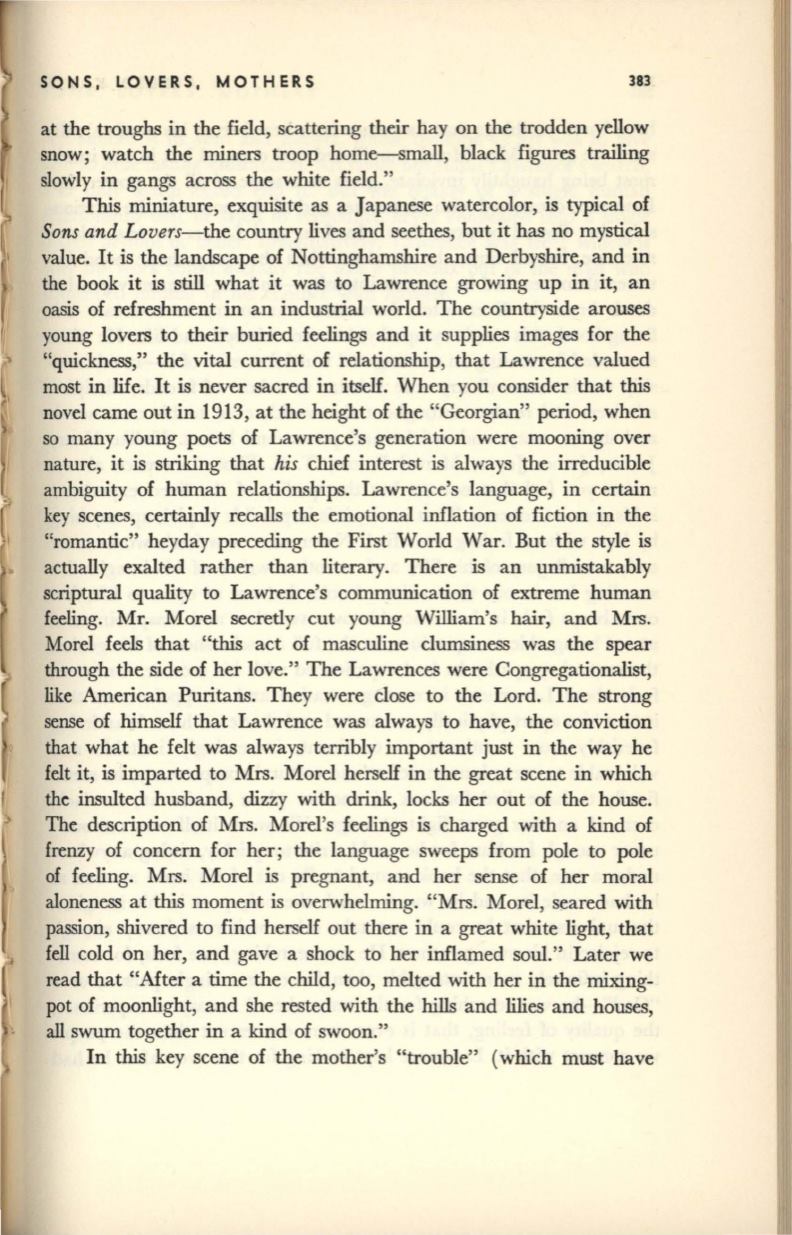
SONS, LOVERS, MOTHERS
383
at the troughs in the field, scattering their hay on the trodden yellow
snow; watch the miners troop home-small, black figures trailing
slowly in gangs across the white field."
This miniature, exquisite as a Japanese watercolor, is typical of
Sons and Lovers-the
country lives and seethes, but
it
has no mystical
value. It is the landscape of Nottinghamshire and Derbyshire, and in
the book it
is
still what it was to Lawrence growing up in it, an
oasis of refreshment in an industrial world. The countryside arouses
young lovers to their buried feelings and it supplies images for the
"quickness," the vital current of relationship, that Lawrence valued
most in life. It is never sacred in itself. When you consider that this
novel came out in 1913, at the height of the "Georgian" period, when
so many young poets of Lawrence's generation were mooning over
nature, it is striking that
his
chief interest is always the irreducible
ambiguity of human relationships. Lawrence's language, in certain
key scenes, certainly recalls the emotional inflation of fiction in the
"romantic" heyday preceding the First World War. But the style is
actually exalted rather than literary. There is an unmistakably
scriptural quality to Lawrence's communication of extreme human
feeling. Mr. Morel secretly cut young William's hair, and Mrs.
Morel feels that "this act of masculine clumsiness was the spear
through the side of her love." The Lawrences were Congregationalist,
like American Puritans. They were close to the Lord. The strong
sense of himself that Lawrence was always to have, the conviction
that what he felt was always terribly important just in the way he
felt it, is imparted to Mrs. Morel herself in the great scene in which
the insulted husband, dizzy with drink, locks her out of the house.
The description of Mrs. Morel's feelings is charged with a kind of
frenzy of concern for her; the language sweeps from pole to pole
of feeling. Mrs. Morel is pregnant, and her sense of her moral
aloneness at this moment
is
overwhelming. "Mrs. Morel, seared with
passion, shivered to find herself out there in a great white light, that
fell cold on her, and gave a shock to her inflamed soul." Later we
read that "Mter a time the child, too, melted with her in the mixing–
pot of moonlight, and she rested with the hills and lilies and houses,
all
swum together in a kind of swoon."
In this key scene of the mother's "trouble" (which must have


